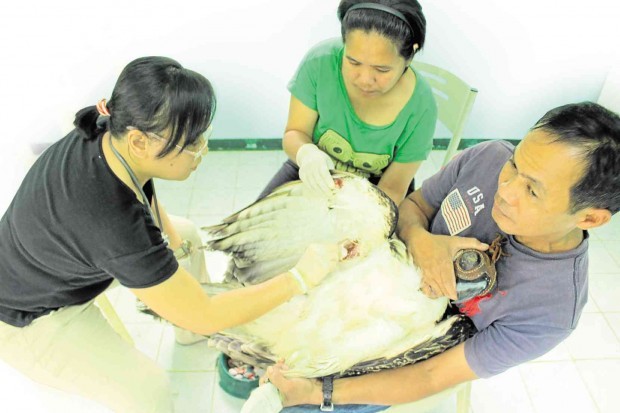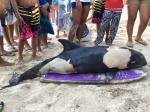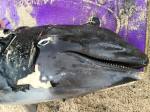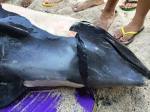By Apriadi Gunawan and Jon Afrizal, 28th February 2016;
Sumatran Elephant (Elephas maximus sumatranus) populations have been continuing to decrease mainly due to illegal hunting, which uses various methods to kill the protected giant mammal, from poisoning to electrocution.
“Recently, we found many Elephants dead from poisoning and electrocution. The illegal hunters consider those ways not too risky,” Doni Gunaryadi of the Indonesia Elephant Conservation Forum (FKGI) told The Jakarta Post on Saturday.
Doni said almost every month an Elephant was found dead in Sumatra due to illegal hunting that takes place in eight of the island’s nine provinces.
He said that today there was no Elephant hunting in West Sumatra because there had been no Elephants in the province since 2007 when their habitat in Kota Panjang was used for the construction of a hydro power plant.
According to the FKGI’s data, the Elephant population across Sumatra is estimated to have reached 2,400 in 2007, but had decreased to 1,700 elephants in 2014.
Doni said there had been an increase in illegal hunting recently due to high prices being paid for the animal’s tusks.
For a super quality tusk, he said, the price could reach tens of millions of rupiah per kilogram while the price of a small tusk could reach millions of rupiah per kilogram.
He said tusks of Sumatran Elephants were sold in and outside of Sumatra, reaching Bali and East Nusa Tenggara where foreign buyers were waiting. “The buyers are mostly foreigners. They love Sumatran Elephant tusks because they’re beautifully shaped and strong,” he said.
Besides illegal hunting, Doni said, the decreasing population of the Elephants was also caused by the expansion of plantations, including massive palm-oil plantations.
He said the Elephants that lost their habitats entered residential areas to seek food and were getting into trouble with villagers.
“Conflicts between Elephants and residents are happening, especially in Riau, Jambi and Aceh. In those three regions, the mortality rate of Elephants is dozens every year,” he said.
FKGI chairman Krismanko Padang said police were currently detaining two illegal hunters for killing two Elephants in Tebo regency in Jambi recently. Police are also searching for the hunters’ accomplices.
Krismanko said the hunters, who were arrested in Riau, would be charged under the Conservation Law for crimes that carried a maximum punishment of five years in prison and a fine of Rp 100 million (US$7,100).
On Jan. 21 the Pangkalan Kerinci District Court in Riau sentenced four men to two-and-a-half years in prison each for hunting and killing Elephants in Tesso Nilo National Park (TNTN) in Pelalawan regency. The court also fined them Rp 20 million each.



























